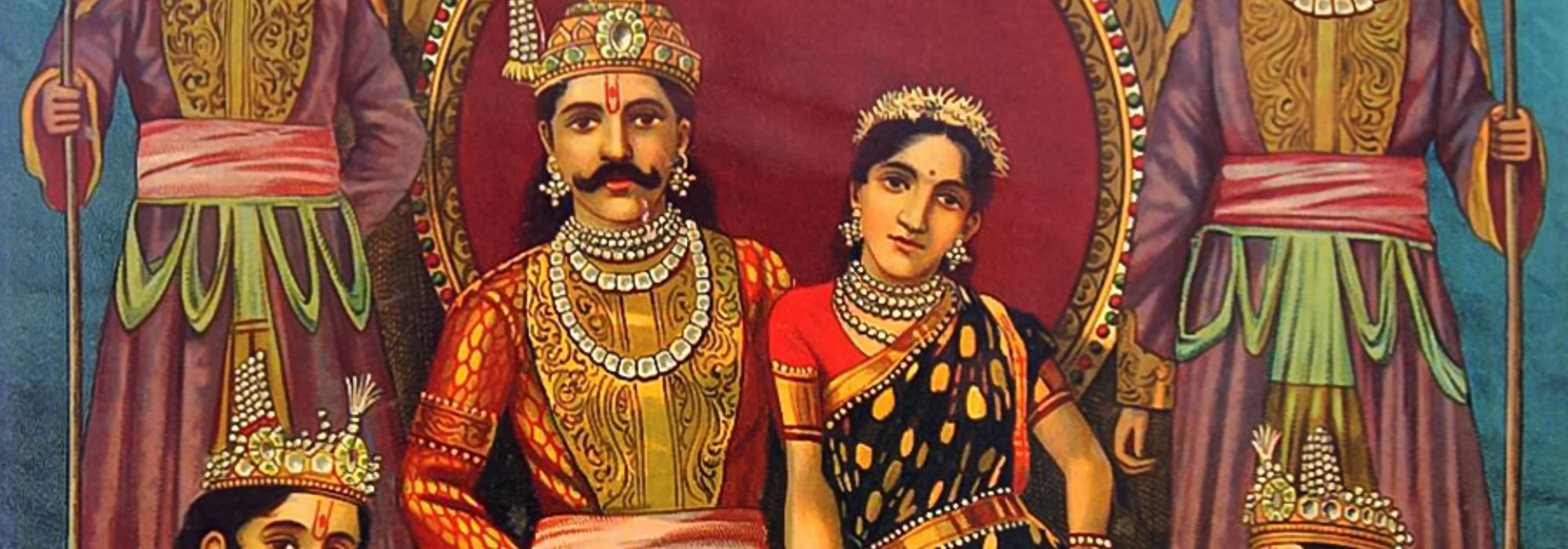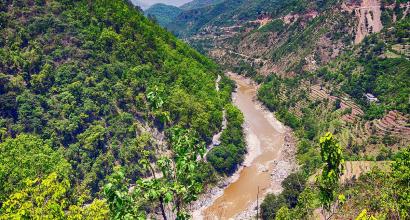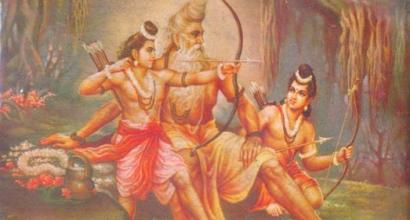Bhīṣma began his instruction to Yudhiṣṭhira on rāja-dharma (the art and science of governance).
First of all, a king has to be devoted to the deities and to brāhmaṇas. By worshipping deities and brāhmaṇas, the ṛṇa (debt) of dharma is paid and the king becomes loved by all. Skill in doing his work, integrity, and moral uprightness are important qualities that a king must possess; he must have compassion towards people from all four varṇas. But he must not be too tender or lenient; for if that happens, people will take him for granted and just like a mahout sits on a familiar elephant, people will climb on his head, taking control of him. A king should never hesitate on the grounds that animosity might arise. Śukrācārya says, “A king who hesitates in making enemies and a brāhmaṇa who is afraid of leaving the town will be swallowed by the earth just as a snake gobbles up rats that enter its den.” A king has to be friendly with those who are amicable. And he must oppose those who are inimical. A king must bring under control an arrogant person who acts according to his whims and fancies, without paying the slightest heed to do-s and don’t-s – even if that person happens to be his guru. Long ago, King Sagara abandoned his eldest son Asamañjasa, who had been tormenting the citizens of his kingdom. A king has to give up vices such as hunting, gambling, etc. It might be good for him but just as a pregnant woman puts aside her own desires and preferences, solely concerned about the child growing inside her womb, a king too must think only of the welfare of his people. The ultimate essence of rāja-dharma is the protection of the people; the means for which are – spies, dāna at the appropriate time, freedom from jealousy, valour, competence, friendship of the noble ones, accumulation of wealth and grains, nourishing sages and people from good families, fulfilling the needs of the army, and taking care of friends, enemies, and mediators in the manner that is suited to them. Aṅgirasa says, “If a king takes good care of his people, it is as good as adhering to all dharmas; why then does he need yajña, tapas, and the like?” Of the six varieties of forts like mountaineous fort, island fort, etc. the strongest is the citizen-fort. If that fort is strong and unshakable, the king has nothing to fear. A king who is himself pure and also takes good care of his people will not fall into the hands of his enemy; and even if he does, he will recover soon and stand firm on his feet. Thus a king should constantly be engaged in the enrichment of his people. The fundamental aspect of rāja-dharma—the very root—is competence in executing tasks. “A valorous person who works is far superior to a valorous person who merely talks; a courageous man in word will simply be engaged in serving and providing entertainment to a courageous man of action,” says Bṛhaspati.
There is no need for a doubt as to whether the king is the reason for time or if the time is the reason for the king. Indeed a king is reason for his time.* It is indeed Kṛta-yuga when a king completely adheres to Daṇḍa-nīti, the age-old fundamental principles of governance and polity. An ideal king must have these thirty-six qualities:
1. He must adhere to dharma joyfully
2. He must not become bereft of friendship and affection
3. He must be an āstika, i.e. a believer in the Supreme and consider the Vedas as authority
4. He must be able to earn wealth without inflicting violence
5. He must enjoy comforts and luxuries but must not become indulgent and intoxicated
6. He must speak kind words but never in a tone of submission
7. He must be courageous but not boastful
8. He must be a person who performs dāna but he should never give anything in charity to an undeserving person
9. He must be competent but must not speak harsh words
10. He must be endowed with a nature to reconcile differences and bring about peace, but he must not negotiate with the worthless
11. He must have the ability to grab from the enemy
12. He must not appoint as spies people who are not close to him
13. He should work in a way such that he doesn’t hurt anyone
14. He must not share any information with the wicked
15. He must praise merit and quality wherever he encounters it; but he should never speak about his own good qualities
16. He must earn wealth but he should never seize anything from sages and saints
17. He should not offer respects to people who are not good
18. He should never award punishment without a thorough enquiry
19. He should hold meetings with councillors in secret; meetings with ministers should never be in the open
20. He should never show lenience towards greedy people
21. He should never believe a person who has tried to harm him
22. He should protect people from the harem from envy
23. He should be impartial and pure
24. He should not excessively indulge in the company of women
25. He should eat well; it should be a wholesome meal and not something that makes him sick
26. Without inhibition, he must show his respect wholeheartedly to meritorious people worthy of reverence
27. He should worship the Supreme without pomp or hypocrisy
28. He must desire the wealth that is not censured
29. He must have experienced solitude
30. He must not show his competence without contemplating on the appropriateness of time
31. He should never speak in a manner of showing lip sympathy as if to indicate ‘I wish you get lost from my sight’
32. He must help without expecting anything in return
33. He should never enter into a war without proper consultation and investigation
34. He should not feel sorrow upon killing an enemy
35. He should not lose his temper without a strong reason
36. He must be gentle and respectful, but not to people who cause harm and injury.
To be continued…
This is an English translation of Prof. A R Krishna Shastri’s Kannada classic Vacanabhārata by Arjun Bharadwaj and Hari Ravikumar published in a serialized form.
The original Kannada version of Vacanabhārata is available for free online reading here. To read other works of Prof. Krishna Shastri, click here.
*The question is whether it is the age or era that determines how the king will be or if the king determines how good the age will be. Bhīṣma says that without doubt it is the king who is the cause for good or bad times –
कालो वा कारणं राज्ञो राजा वा काल-कारणम्।
इति ते संशयो मा भूद्-राजा कालस्य कारणम्॥
(शान्तिपर्व 70.6)












































